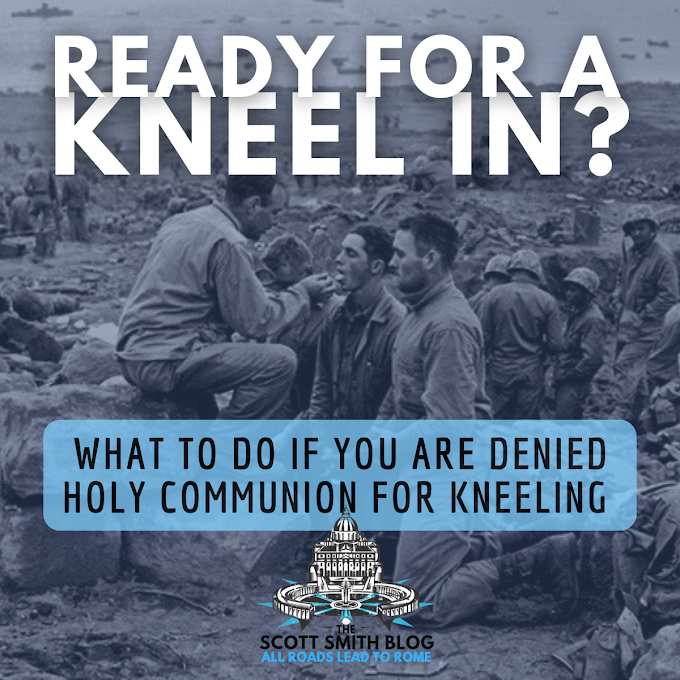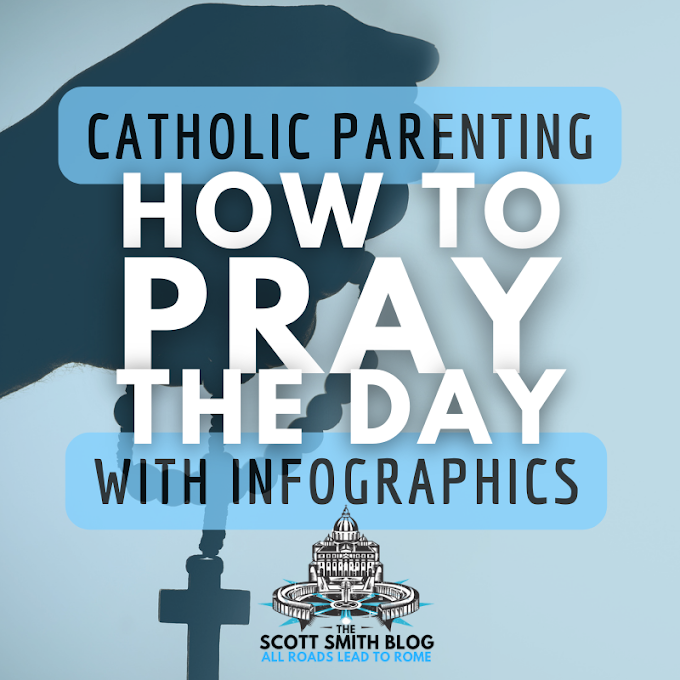This post is in response to a question my aunt asked me. She asked, why is all the iconoclasty (or iconophilia) in Catholicism not considered idolatry?
Okay, first off. What's the commandment say? Exodus 20:2-6 from the New American Bible (NAB):
"I, the LORD, am your God, who brought you out of the land of Egypt, that place of slavery. You shall not have other gods besides me. You shall not carve idols for yourselves in the shape of anything in the sky above or on the earth below or in the waters beneath the earth; you shall not bow down before them or worship them. For I, the LORD, your God, am a jealous God, inflicting punishment for their fathers' wickedness on the children of those who hate me, down to the third and fourth generation; but bestowing mercy down to the thousandth generation, on the children of those who love me and keep my commandments."
Different religions number their Commandments differently, which leads to a different placement of "You shall not make for yourself a grave image." Most people probably forget this, thinking the commandments are the commandments, but not every Decalogue is created equally.
Check out the following table (which I hijacked from Wikipedia):
 If you notice, Catholics and Lutherans actually agree on something. They take their numbering of the commandments from Deuteronomy 5, as opposed to Exodus 20.
If you notice, Catholics and Lutherans actually agree on something. They take their numbering of the commandments from Deuteronomy 5, as opposed to Exodus 20.
This numbering is important theologically. Protestants throw in a man's wife among his possessions for things that you should not covet ... I'm sure Henry VIII appreciated this. The Catholic/Lutheran numbering, on the other hand, regards the phrase "graven images" differently, throwing it in with #1, "You shall have no other gods before me."
Now, why is the veneration of images of Jesus, the Virgin Mary, and the saints, either in two or three dimensions not idolatry?
 Let me first say that if God did not intend for his loyal disciples to make statues and holy images, WHY did He command Moses to adorn the Ark of the Covenant (THE most holy relic of the Semitic people) with statues of cherubim??? Notice that God instructs Moses in the making of the Ark in almost the same breath as the Commandments. Clearly, God is not contradicting himself: there must be something wrong with our interpretation of what is a "graven image." Why is the Golden Calf different from the Golden Cherubim, or even the Bronze serpent that Moses raises in the desert? The answer is on some levels obvious, but let's get down to the etymology.
Let me first say that if God did not intend for his loyal disciples to make statues and holy images, WHY did He command Moses to adorn the Ark of the Covenant (THE most holy relic of the Semitic people) with statues of cherubim??? Notice that God instructs Moses in the making of the Ark in almost the same breath as the Commandments. Clearly, God is not contradicting himself: there must be something wrong with our interpretation of what is a "graven image." Why is the Golden Calf different from the Golden Cherubim, or even the Bronze serpent that Moses raises in the desert? The answer is on some levels obvious, but let's get down to the etymology.
There are two kinds of veneration: latreía and douleía. Veneration in the form of latreía, the veneration due to God alone [period] is doctrinally forbidden by the Catholic Church. The veneration of religious pictures or Icons in the form of douleía, however, is not only allowed but obligatory. The difference is subtle sometimes, and may be confusing to the casual observer. For instance, I've seen Protestant websites posting pictures of the pope kneeling before statues of the saints and calling him an idolator, but they don't notice that he kneels on a different knee before these statues and the Blessed Sacrament.
Lastly, let's look at the writings of St. John of Damascus on this subject, because he was a great fighter of heresy in his time AND because he makes it so simple. In his work, "On the Divine Image," which was written in the 8th century in response to the Iconoclastic Controversy that would eventually lead to the Great Schism of 1054, St. John argues, while depicting the invisible God is indeed wrong, the Incarnation, in which "the Word became flesh" (Jn 1:14), indicates that the invisible God became visible. Consequently, it is permissible to depict Jesus Christ. St. John writes, "When He who is bodiless and without form... existing in the form of God, empties Himself and takes the form of a servant in substance and in stature and is found in a body of flesh, then you draw His image."
Ultimately, I believe, attacking the Catholic Church by calling them idolators is an attack on the Eucharist--the flesh of Christ, Himself--and the doctrine of the Incarnation. Because the Eucharist stands as the "source and summit" of the Church, it is no wonder that it, too, should be attacked.
I hope this answers the question that was posed to me. I welcome discussion on this post.
Merry Christmas! O Come Let Us Adore Him!
Okay, first off. What's the commandment say? Exodus 20:2-6 from the New American Bible (NAB):
"I, the LORD, am your God, who brought you out of the land of Egypt, that place of slavery. You shall not have other gods besides me. You shall not carve idols for yourselves in the shape of anything in the sky above or on the earth below or in the waters beneath the earth; you shall not bow down before them or worship them. For I, the LORD, your God, am a jealous God, inflicting punishment for their fathers' wickedness on the children of those who hate me, down to the third and fourth generation; but bestowing mercy down to the thousandth generation, on the children of those who love me and keep my commandments."
Different religions number their Commandments differently, which leads to a different placement of "You shall not make for yourself a grave image." Most people probably forget this, thinking the commandments are the commandments, but not every Decalogue is created equally.
Check out the following table (which I hijacked from Wikipedia):

This numbering is important theologically. Protestants throw in a man's wife among his possessions for things that you should not covet ... I'm sure Henry VIII appreciated this. The Catholic/Lutheran numbering, on the other hand, regards the phrase "graven images" differently, throwing it in with #1, "You shall have no other gods before me."
Now, why is the veneration of images of Jesus, the Virgin Mary, and the saints, either in two or three dimensions not idolatry?
 Let me first say that if God did not intend for his loyal disciples to make statues and holy images, WHY did He command Moses to adorn the Ark of the Covenant (THE most holy relic of the Semitic people) with statues of cherubim??? Notice that God instructs Moses in the making of the Ark in almost the same breath as the Commandments. Clearly, God is not contradicting himself: there must be something wrong with our interpretation of what is a "graven image." Why is the Golden Calf different from the Golden Cherubim, or even the Bronze serpent that Moses raises in the desert? The answer is on some levels obvious, but let's get down to the etymology.
Let me first say that if God did not intend for his loyal disciples to make statues and holy images, WHY did He command Moses to adorn the Ark of the Covenant (THE most holy relic of the Semitic people) with statues of cherubim??? Notice that God instructs Moses in the making of the Ark in almost the same breath as the Commandments. Clearly, God is not contradicting himself: there must be something wrong with our interpretation of what is a "graven image." Why is the Golden Calf different from the Golden Cherubim, or even the Bronze serpent that Moses raises in the desert? The answer is on some levels obvious, but let's get down to the etymology. There are two kinds of veneration: latreía and douleía. Veneration in the form of latreía, the veneration due to God alone [period] is doctrinally forbidden by the Catholic Church. The veneration of religious pictures or Icons in the form of douleía, however, is not only allowed but obligatory. The difference is subtle sometimes, and may be confusing to the casual observer. For instance, I've seen Protestant websites posting pictures of the pope kneeling before statues of the saints and calling him an idolator, but they don't notice that he kneels on a different knee before these statues and the Blessed Sacrament.
Lastly, let's look at the writings of St. John of Damascus on this subject, because he was a great fighter of heresy in his time AND because he makes it so simple. In his work, "On the Divine Image," which was written in the 8th century in response to the Iconoclastic Controversy that would eventually lead to the Great Schism of 1054, St. John argues, while depicting the invisible God is indeed wrong, the Incarnation, in which "the Word became flesh" (Jn 1:14), indicates that the invisible God became visible. Consequently, it is permissible to depict Jesus Christ. St. John writes, "When He who is bodiless and without form... existing in the form of God, empties Himself and takes the form of a servant in substance and in stature and is found in a body of flesh, then you draw His image."
Ultimately, I believe, attacking the Catholic Church by calling them idolators is an attack on the Eucharist--the flesh of Christ, Himself--and the doctrine of the Incarnation. Because the Eucharist stands as the "source and summit" of the Church, it is no wonder that it, too, should be attacked.
I hope this answers the question that was posed to me. I welcome discussion on this post.
Merry Christmas! O Come Let Us Adore Him!












3 Comments
Also, it's not that St. John Damascene added something new to Catholic (and Eastern) doctrine; he revealed what was truth from the beginning. The development of doctrine is more like the gradual clearing of an obscured mirror (cf 1 Cor 13:12) than the creation of new theories.
How do we know? Our certitude is grounded on the revealed Truth of Scripture and Tradition. There's a cohesiveness and interior logic to it all: everything connects, and it all ties together with the Eucharist as the source and summit.
Does that answer your question? Or, just spur new ones?